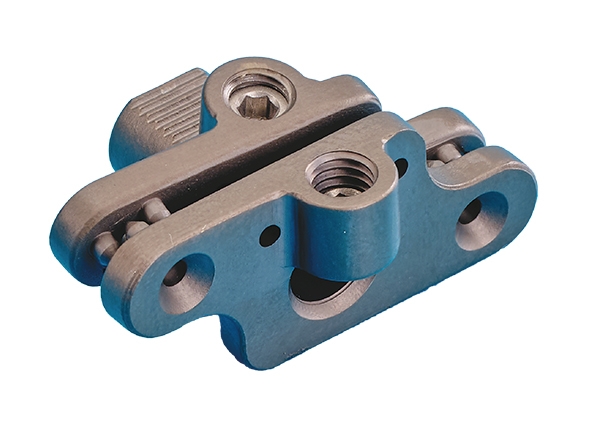INTERSPINOUS FUSION DEVICE

Interspinous Fusion Device is a implant that is designed to fit between the spinous processes of the lumbar spine. It is manufacture of Ti 6Al-4V ELI (ISO 5832-03), and consists of a single component with deployable superior and inferior projections that engage the spinous processes to secure it in place. Interspinous Fusion Device is provided non-sterile or sterile in different sizes.
Interspinous Fusion Device is implanted by percutaneous means through a cannula inserted between adjacent spinous processes. Once inserted into the interspinous process space the Interspinous Fusion Device is deployed, or opened, to provide distraction at the affected spinal segment.
Interspinous Fusion Device includes a set of proprietary instruments necessary to deliver Interspinous Fusion Device percutaneously. Instruments specifically designed for implanting the Interspinous Fusion Device consist of a cannula, dilators, an interspinous reamer, an interspinous gauge, and an inserter with driver utilized to deploy the device once in position. Additional general-purpose instruments included in the instrument set consist of a mallet, retractor, a handle for the cannula, and forceps.
Indications
Interspinous Fusion Device is indicated to treat skeletally mature patients suffering from pain, numbness, and/or cramping in the legs (neurogenic intermittent claudication) secondary to a diagnosis of moderate lumbar spinal stenosis, with or without Grade 1 spondylolisthesis, confirmed by X-ray, MRI and/or CT evidence of thickened ligamentum flavum, narrowed lateral recess, and/or central canal narrowing. Interspinous Fusion Device is indicated for those patients with impaired physical function who experience relief in flexion from symptoms of leg/buttock/groin pain, with or without back pain, who have undergone at least 6 months of non-operative treatment. Interspinous Fusion Device may be implanted at one or two adjacent lumbar levels in patients in whom operative treatment is indicated at no more than two levels, from L1 to S1.
For this intended use, Moderate Degenerative Lumbar Spinal Stenosis was defined as follows:
•25% to 50% reduction in the central canal and/or nerve root canal (subarticular, neuroforaminal) compared to the adjacent levels on radiographic studies, with radiographic confirmation of any one of the following:
• Evidence of thecal sac and/or cauda equina compression
• Evidence of nerve root impingement (displacement or compression) by either osseous or non-osseous elements
• Evidence of hypertrophic facets with canal encroachment
• AND Associated with the following clinical signs:
• Presents with moderately impaired Physical Function (PF) defined as a score of ≥ 2.0 of the Zurich Claudication Questionnaire (ZCQ)
• Ability to sit for 50 minutes without pain and to walk 50 feet or more.